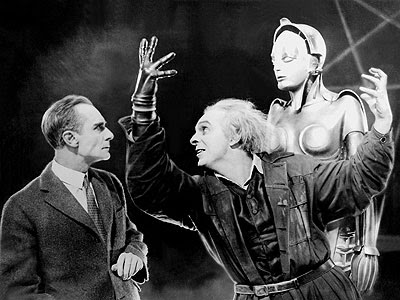Life Like Weeds
Film // Music // Rubbish Dump
Wednesday 27 October 2010
Crystal Castles ft. Robert Smith 'Not in Love'
Just stumbled across this thanks to a retweet from Drowned in Sound. Reckon it's sort of like really very good. Robert Smith and Crystal Castles. Who'd have thunk it.
Crystal Castles played the last two Leeds Festivals but I wasn't allowed to watch them because my friends reminded me I'm not 17 and I'm not in Skins. I think I regret not going to watch them. I think I definitely regret going to watch Vampire Weekend instead (2009 was a dark year).
Anyway. Big fan of this. Always preferred the skanky mess of the second Crystal Castles album to the (mostly) more tightly arranged first one. Even if I'm almost 22 and was never in Skins.
It's out December 6. Apparently they're popping acoustic versions of Celestica and Suffocation on the single too. Bless 'em. Maybe they're sensitive souls after all.
(Thanks Drowned in Sound, thanks Clash)
Sunday 10 October 2010
'I'd be lost without the weight of you two on my back'

17 year old Ree (Jennifer Lawrence), the focus of Debra Granik’s Winter’s Bone, doesn't have it easy. Abandoned by a feckless dad and left to look after two kid siblings and a mentally ill Mum, she's been robbed of her teenage years. If things look bad at the start of the film, as she spends long grey days chopping wood and begging neighbours for supplies, they're about to get a lot worse. A local sheriff drops by to let Ree know that her dad jumped bail. Since he put the house she struggles to maintain up as bond, her family will be left homeless unless she can track him down. So begins her meet and greet with the strange folk of the Ozark Mountains.
Image via Google
Tuesday 28 September 2010
'Welcome to sunny East Finchley'
Sunday 26 September 2010
'At least they do things with a certain elegance'
La Dolce Vita, one of Fellini’s most popular and accessible works, isn’t really about much. Marcello Rubini (Marcello Mastroianni) is a journalist and man-about-town who wanders endlessly across Rome from one decadent party to the next, followed by his loyal troop of paparazzi. Along the way, he wades through the Trevi Fountain at night with the beautiful starlet, Sylvia (Anita Ekberg), and later covers a woman in feathers so she looks like a chicken. Yeah.
Although the film follows a number of characters from Marcello’s perspective, Fellini has little interest in narrative arcs that allow to them gleam any valuable life experience from their endeavours. La Dolce Vita’s running time stretches to three hours but there’s little room for character development. The films just glides from party to party, presenting a series of vignettes of languid aesthetes. Their hedonism is coldly compelling. As Marcello’s girlfriends puts it, ‘at least they do things with a certain elegance’.
He resists making any overt moral judgements, but Fellini hints at the unfulfilling nature of his characters’ lives. Throughout there is an emphasis on performance. Sylvia sashays from her private jet to her adoring photographers, only to repeat the action so they can get a better picture. This kind of faking it for the cameras occurs elsewhere, and often. This life might be sweet, but it’s not real. When Marcello and his father visit a nightclub and watch a performance by a tragic clown who bumbles from one calamity to another, for the audience’s pleasure, the message is clear.
Towards the end of the film, a tragedy occurs that is all the more surprising because it comes out of nowhere. What’s interesting is that Fellini largely ignores the aftermath of the event. Instead, he focuses on paparazzi swarming around the family member left behind as police break the news. In an earlier and unrelated scene, one photographer asks Sylvia, the famous actress, ‘Do you think Italian Neorealism is dead or alive?’. A self-reflexive joke that got a (self-satisfied) laugh from last night’s audience, the line now suggests how everything becomes a commodity in the end, even a person’s life.
Surprisingly watchable for its lack of any narrative development, La Dolce Vita is haunting for its cold observational distance. It is a subtle and poignant exploration of life lived elegantly wasted. It’s definitely worth a viewing. Just maybe not at the BFI Southbank, unless you want to get tutted at for breathing.
Monday 13 September 2010
Metropolis 2010. Reconstructed. Restored. Really long.

Image via Google
Sunday 5 September 2010
'Most people here don't even have names. Everyone's just passing through'.
Tuesday 31 August 2010
Arcade Fire are bastards and they are hogging all the talent and ingenuity.

Image via Google